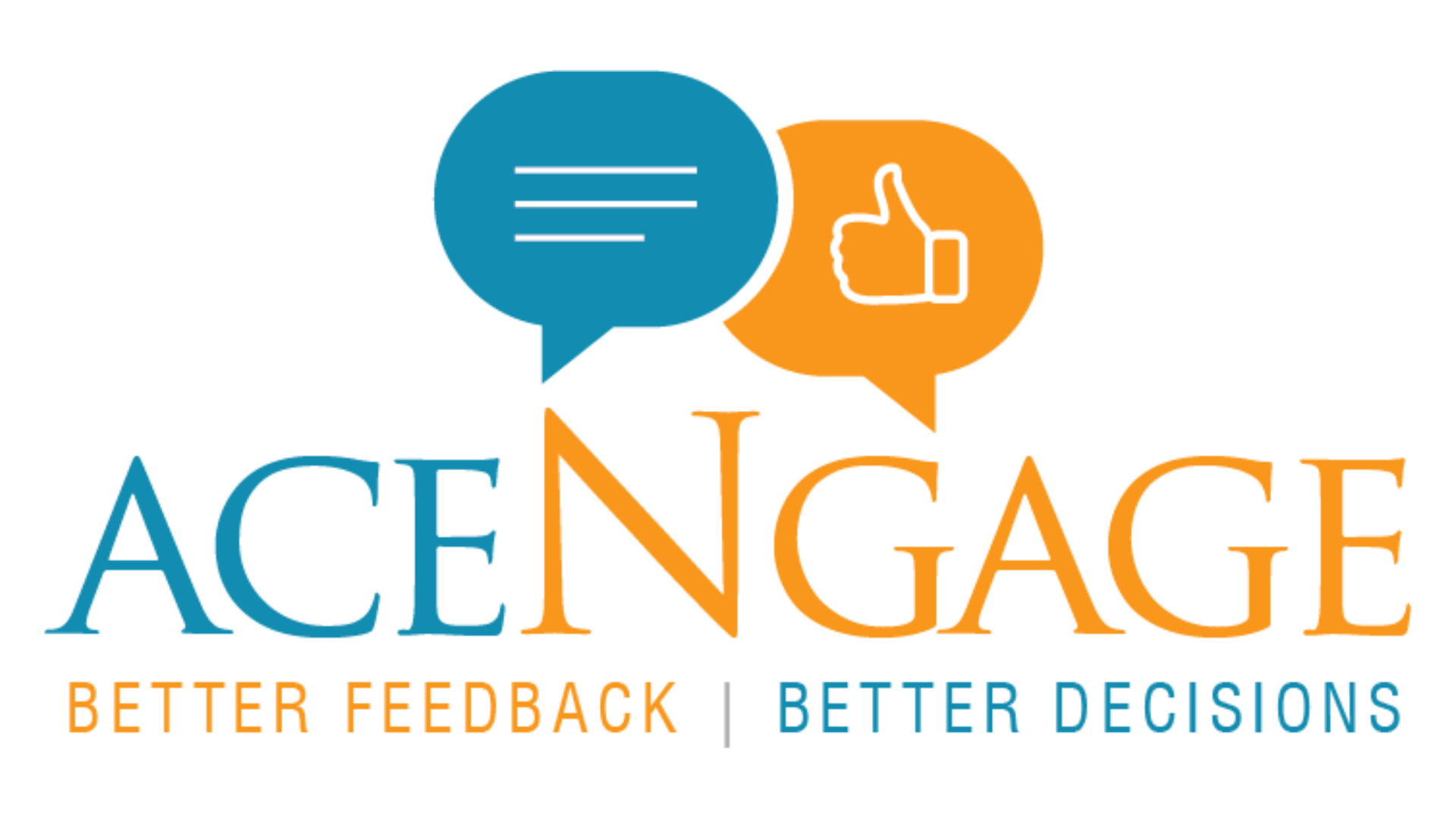[vc_row row_type=”row” text_align=”left”][vc_column][ultimate_spacer height=”20″][vc_column_text]In the dynamic landscape of businesses, retaining top-tier employees has become more crucial than ever. Every organization aspires to cultivate a workforce that embodies not only skill and dedication but also a deep commitment to the company’s vision and mission. Yet, in the ever-evolving professional realm, employees occasionally choose to explore new horizons and pursue fresh opportunities. This is precisely where exit interviews come into play.
Exit interviews (EI) help organizations to discern what improvements can be made to retain their top talents and enhance overall employee satisfaction and engagement. It is a great strategic opportunity to evaluate your organization, maintain a strong employer brand, and identify fresh strategies to boost employee retention.
So, let’s explore with Acengage how exit interviews can assist businesses in their pursuit to retain top talents and how to conduct them properly.[/vc_column_text][ultimate_spacer height=”20″][vc_row_inner][vc_column_inner][vc_column_text]
Goals of an Exit Interview
The urge to let employees leave quietly and quickly is driven by a desire to avoid disruption and disappointments. However, to improve employee retention, organizations should resist this temptation and proceed with the exit interview process. The following are the goals that an exit interview helps us to achieve:
1. Uncover HR issues: Companies conducting employee exit interview always prioritize salary and benefits. While financial compensation drives employees to seek new opportunities, it’s essential for organizations to also consider other factors for employee departures. Various HR practices can also influence these exits. Conducting effective exit interviews can reveal underlying issues that require attention at the HR and talent management levels.
2. Understanding employees’ perception of work and organization: The exit interview catalyzes comprehending job design, working conditions, and interactions with peers within the organization. It can aid managers in improving motivation, coordination, and efficiency.
3. Gain insight into leadership styles and effectiveness: Organizations can reinforce positive leadership and identify toxic ones. Effective exit interviews can identify and resolve issues such as micromanagement, lack of communication, and other challenges.
4. Learn about benchmarks (salary and benefits) at competing organizations: Organizations can use the exit interview process to see how competitive other employers are. It can give insight into the abipty to advance, different benefits, pay packages, and compensation competing organizations offer.
5. Foster innovation to improve the organization: As a strategic opportunity, exit interviews should extend beyond individual experiences. It should cover hopstic areas, including company strategy, marketing operations, employee division structure, and competitive analysis. This approach reveals ongoing trends and fosters innovation.
6. Creates reputation and advocacy for the organization: Conducting friendly exit interviews and treating departing employees with respect and gratitude encourages them to recommend the company. This fosters a positive connection between former employees and the organization, resulting in an enhanced reputation and increased advocacy for the organization.[/vc_column_text][/vc_column_inner][/vc_row_inner][ultimate_spacer height=”20″][vc_row_inner][vc_column_inner][vc_column_text]
Tactics and Techniques to Improve Employee Retention:
Now that we have tackled the goals of exit interview service and their role in enhancing employee retention. Let’s look at some tactics and techniques for better implementation.
- Interviews conducted by concerned managers do not often lead to productive action. When second-line managers or an outside consultant conduct the interviews, they typically receive more honest feedback. This approach eliminates the bias and also yields more reliable data.
- Implementing employee exit interviews as a standard practice is beneficial. If it’s not feasible for the entire workforce, consider conducting it for top performers, executives, and high-potential professionals, at the very least.
- Timing of the EIs is crucial. The best approach is to interview after the employee has left the company. This leads to more relaxed feedback, as opposed to during their final days when emotions might be heightened.
- Conducting a face-to-face interview is the best way to create rapport. Alternatively, you can inquire former employees about their preferred method for interviewing, which encourages honest and preferable responses.
- Interviewers should prioritize listening rather than responding. This approach fosters an understanding of employee concerns, which in turn can be insights for improvement. The exit interview should serve as a platform for employees to express their thoughts; only essential observations should be utilized.
[/vc_column_text][ultimate_spacer height=”20″][vc_column_text]Exit interviews are frameworks for elevating employee retention, capable of uncovering valuable insights to enhance organizational strategies and policies. Additionally, EIs provide a platform for departing employees to voice their opinions and contribute to continuous improvement initiatives.
Organizations can improve employee retention through exit interview service. Acenegae specializes in exit interview consultancy, fostering a proactive approach to understanding employee feedback and implementing strategies for enhanced retention. Join us today to embark on a journey toward a more engaged and thriving workforce.[/vc_column_text][ultimate_spacer height=”20″][ultimate_spacer height=”20″][/vc_column_inner][/vc_row_inner][vc_row_inner][vc_column_inner width=”1/2″][vc_column_text]
[/vc_column_text][/vc_column_inner][vc_column_inner width=”1/2″][vc_column_text]
[/vc_column_text][/vc_column_inner][/vc_row_inner][ultimate_spacer height=”40″][/vc_column][/vc_row][vc_row][vc_column][vc_raw_html]JTNDc2NyaXB0JTIwdHlwZSUzRCUyMmFwcGxpY2F0aW9uJTJGbGQlMkJqc29uJTIyJTNFJTBBJTdCJTBBJTIwJTIwJTIyJTQwY29udGV4dCUyMiUzQSUyMCUyMmh0dHBzJTNBJTJGJTJGc2NoZW1hLm9yZyUyMiUyQyUwQSUyMCUyMCUyMiU0MHR5cGUlMjIlM0ElMjAlMjJCbG9nUG9zdGluZyUyMiUyQyUwQSUyMCUyMCUyMm1haW5FbnRpdHlPZlBhZ2UlMjIlM0ElMjAlN0IlMEElMjAlMjAlMjAlMjAlMjIlNDB0eXBlJTIyJTNBJTIwJTIyV2ViUGFnZSUyMiUyQyUwQSUyMCUyMCUyMCUyMCUyMiU0MGlkJTIyJTNBJTIwJTIyaHR0cHMlM0ElMkYlMkZ3d3cuYWNlbmdhZ2UuY29tJTJGJTIyJTBBJTIwJTIwJTdEJTJDJTBBJTIwJTIwJTIyaGVhZGxpbmUlMjIlM0ElMjAlMjJFeGl0JTIwSW50ZXJ2aWV3cyUzQSUyMEElMjBSb2FkbWFwJTIwdG8lMjBJbXByb3ZpbmclMjBFbXBsb3llZSUyMFJldGVudGlvbiUyMiUyQyUwQSUyMCUyMCUyMmltYWdlJTIyJTNBJTIwJTIyaHR0cHMlM0ElMkYlMkZ3d3cuYWNlbmdhZ2UuY29tJTJGd3AtY29udGVudCUyRnVwbG9hZHMlMkYyMDIzJTJGMDglMkZleGl0LWludGVydmlldy1yb2FkbWFwLXRvLWltcHJvdmluZy1lbXBsb3llZS1yZXRlbnRpb24ucG5nJTIyJTJDJTIwJTIwJTBBJTIwJTIwJTIyYXV0aG9yJTIyJTNBJTIwJTdCJTBBJTIwJTIwJTIwJTIwJTIyJTQwdHlwZSUyMiUzQSUyMCUyMk9yZ2FuaXphdGlvbiUyMiUyQyUwQSUyMCUyMCUyMCUyMCUyMm5hbWUlMjIlM0ElMjAlMjJBY2VuZ2FnZSUyMiUyQyUwQSUyMCUyMCUyMCUyMCUyMnVybCUyMiUzQSUyMCUyMmh0dHBzJTNBJTJGJTJGd3d3LmFjZW5nYWdlLmNvbSUyRiUyMiUwQSUyMCUyMCU3RCUyQyUyMCUyMCUwQSUyMCUyMCUyMnB1Ymxpc2hlciUyMiUzQSUyMCU3QiUwQSUyMCUyMCUyMCUyMCUyMiU0MHR5cGUlMjIlM0ElMjAlMjJPcmdhbml6YXRpb24lMjIlMkMlMEElMjAlMjAlMjAlMjAlMjJuYW1lJTIyJTNBJTIwJTIyQWNlbmdhZ2UlMjIlMkMlMEElMjAlMjAlMjAlMjAlMjJsb2dvJTIyJTNBJTIwJTdCJTBBJTIwJTIwJTIwJTIwJTIwJTIwJTIyJTQwdHlwZSUyMiUzQSUyMCUyMkltYWdlT2JqZWN0JTIyJTJDJTBBJTIwJTIwJTIwJTIwJTIwJTIwJTIydXJsJTIyJTNBJTIwJTIyaHR0cHMlM0ElMkYlMkZ3d3cuYWNlbmdhZ2UuY29tJTJGd3AtY29udGVudCUyRnVwbG9hZHMlMkYyMDIxJTJGMTElMkZhY2VuZ2FnZS1sb2dvLnBuZyUyMiUwQSUyMCUyMCUyMCUyMCU3RCUwQSUyMCUyMCU3RCUyQyUwQSUyMCUyMCUyMmRhdGVQdWJsaXNoZWQlMjIlM0ElMjAlMjIyMDIzLTA4LTI1JTIyJTBBJTdEJTBBJTNDJTJGc2NyaXB0JTNFJTBB[/vc_raw_html][/vc_column][/vc_row]







